Everybody and their granny’s got a secret or three for makin’ love work: communication, boundaries, terms and conditions, eye of newt…
But at Empathi, we’ve identified 3 true pillars of relationship repair, smushed them up, and crafted one incredibly effective philosophy and approach for helping couples and individuals:
Attachment Theory, Systems Theory, and Experiential Psychotherapy.
1. Attachment Theory
When human beings are born, we don’t need food, shelter, or a crossbow to protect ourselves…
Babies are absolutely useless!!
They can’t feed themselves. They can’t fight. They can’t hold down a job. If you put a warm blanket right next to them, they couldn’t even cover themselves.
So, how the heck has the human race managed to survive..? Attachment.
Attachment Theory is the best theory we have of what love is from a biological perspective:
The need to be bonded with another human being from the moment you’re born to the moment you die.
We just have this built-in mechanism that we want to be loving and nurturing to little babies, and that as babies we are going to f**king freak out if it looks like no one’s there or that we’re a disappointment…
The Relentless Lover
“Are you there for me?”
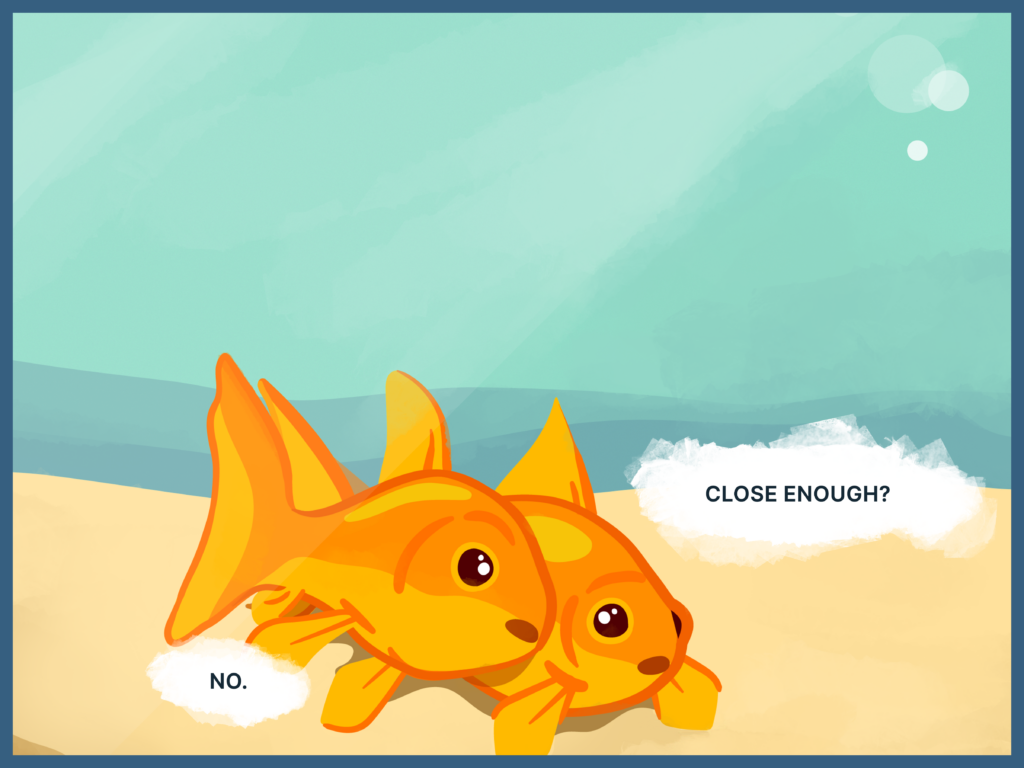
Relentless Lovers survived their childhood by forming adaptations and sensitivities around being abandoned by their primary attachment figure.
Say you’ve got an anxious mom who is too busy doomscrolling on Instagram and sippin’ matcha lattes to look like they’re capable of being there for you.
To keep yourself from being pulled away by a hungry tiger, you’re going to notice and react to whenever it looks like mum is distracted!
These lovers become relentless in wanting connection because they’re never quite sure you’re really gonna be there.
The Reluctant Lover
“Am I enough for you?”
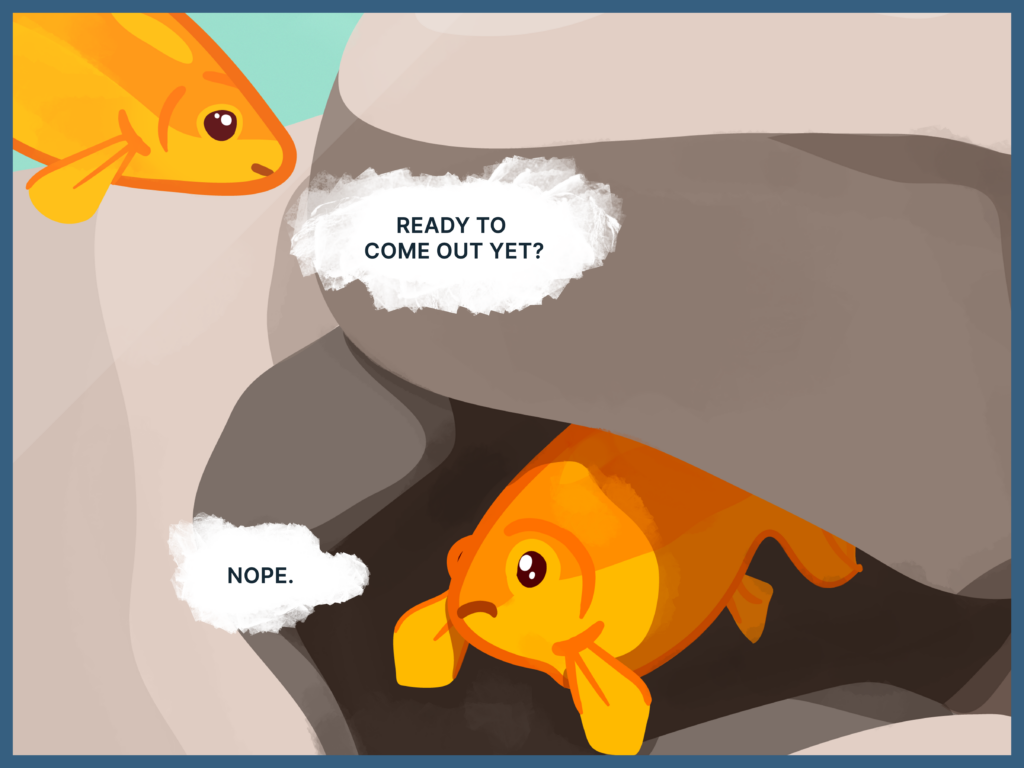
Reluctant Lovers survived their childhood by forming adaptations and sensitivities around being rejected.
Imagine you run 100 meters, win a silver medal, and mum and dad are the type who “just don’t understand why you didn’t win after all that practice…”
To keep your primary attachment figure from shrugging and letting the coyotes claim you, you’re gonna notice and react to when it looks like they are unhappy with you.
These lovers become reluctant in connection — though they do want it — because they’re not sure that they’re actually gonna be enough.
70-80% of the time, a Relentless Lover and Reluctant Lover get together.
But whether you adapt by writing passive-aggressive sticky notes or learning jujitsu to beat the crap out of people, most people go through their lives figuring, “This is just how I’ve always been.”
We’re like fish, breathing and swimming in the same attachment waters all our lives…
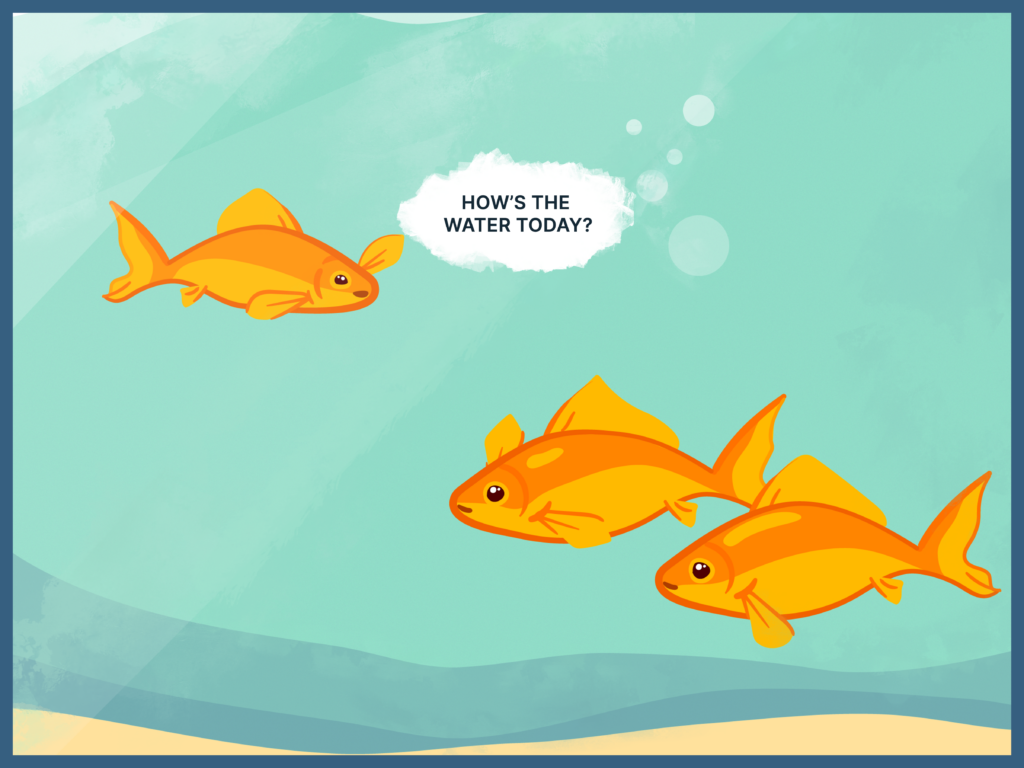
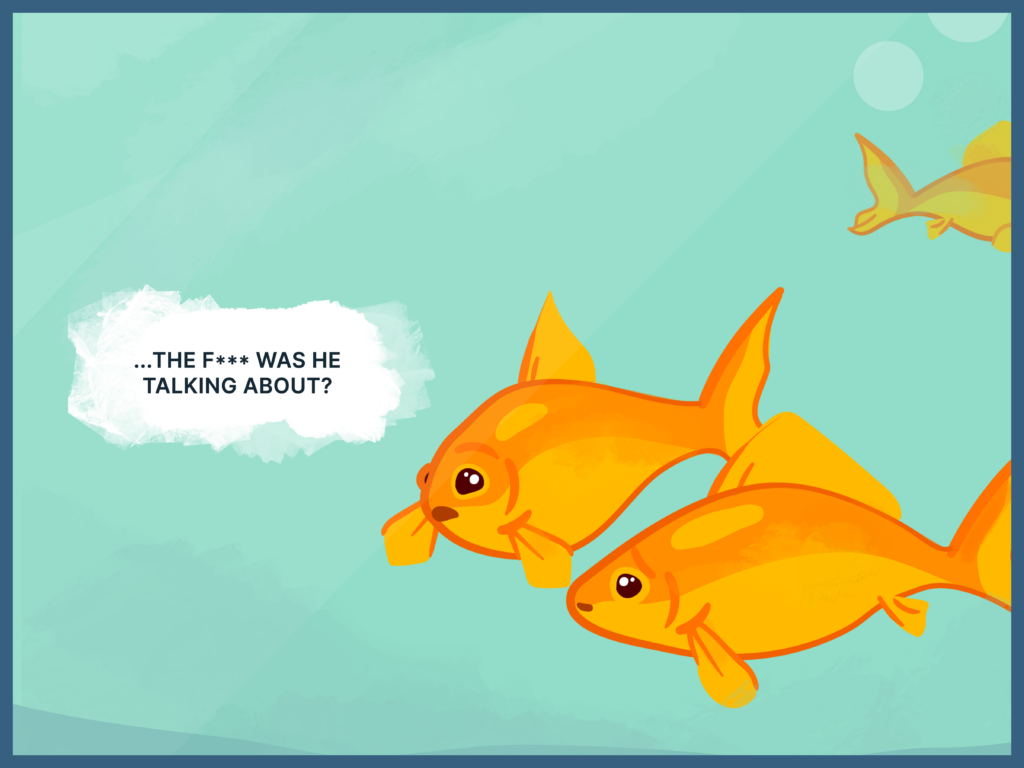
That is, until we move into our own fishbowls…
2. Systems Theory
So two people that need to be emotionally bonded and have particular sensitivities to “Are you really there for me?” or “Am I really enough for you?” grow up and become each other’s primary attachment figure…
Now it’s a clean slate, right?
It’s all live, laugh, love from here on out?
Nope!
Now the adaptations and sensitivities that kept you both safe all your life are about to wreak a little havoc in a system best understood as an infinity loop…
The Infinity Loop
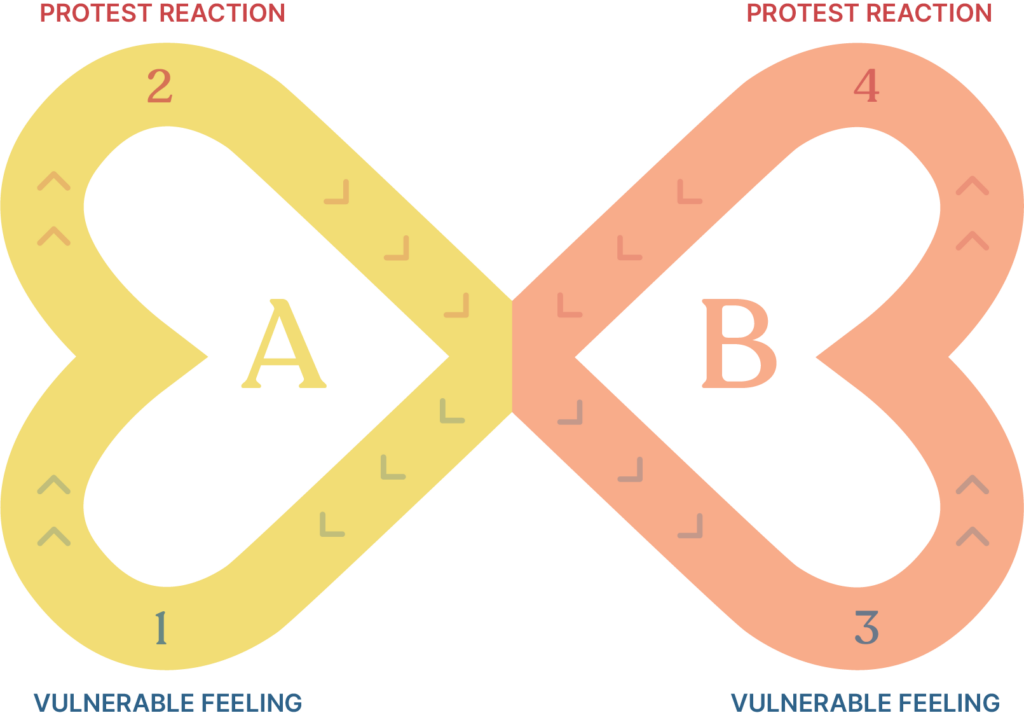
1. Partner A has a vulnerable feeling (Partner B isn’t gonna be there for them or is disappointed in them.)
↓
2. Partner A reacts with a protest behavior (such as blaming, criticizing, withdrawing, or shutting down.)
↓
3. Partner B has a vulnerable feeling — their vulnerable self gets scared they’re not gonna be loved in the way they long for.
↓
4. Partner B reacts with a protest behavior — their protestor tries to protect their vulnerable self.
Imagine the Relentless Lover from earlier gets scared when they see their partner staring at a phone ’cause it looks a lot like mom scrolling on instagram all day… (1)
So they criticize their partner, “Why are you on your phone so much? I read that’s not good for you.” (2)
Now their Reluctant Lover partner thinks, “Great, looks like I’m unacceptable again. 100 meters isn’t good enough. This is the thing I’ve been trying not to feel all my life.” (3)
So now they’re gonna run off to the pub. (4)
Relentless Lover then gets confirmation — now they’re definitely gonna be alone (1) — and follows their partner to the pub to tell them, “This is NOT good behavior!” (2)
Now the Reluctant Lover feels like they’ll never be acceptable (3) and starts SPRINTING to the pub (4)…
And the cycle just grows and gains more momentum, ad infinitum.
You and your partner can’t help but recreate your traumas in your relationship — stuck hurting each other and yourselves over and over again — because deep down inside there, there’s something you’re not getting…
3. Experiential Psychotherapy
Experiential Psychotherapy is the glue that makes big transformation possible.
Here, we get to craft living, breathing experiences that help you FEEL f**kin’ deeply the love you’ve been longing for your whole lives.
For that, you’ve gotta come to accept and love ALL four of parts of the system:
1. Your vulnerable side (mixed up with the shame of “I’m too much” or “I’m not enough”)
2. Your reactive side (which you are blind to, ignore, or dislike)
3. Your partner’s vulnerable one (who??)
4. Your partner’s reactive one (oh, that f**ker)
"Love and accept the REACTIVE ones? Those troublemakers???"
YES.
Remember: the only reason either of you are doing the reactivity is because you’re hurting inside, and the only reason you’re hurting inside is because you haven’t let yourself really feel how much it hurts.
So as therapists, we have to use all our skills to be a friend to your reactivity — validate it, get you to recognize it’s happening — and then use even deeper, slightly different skills to actually make you FEEL deeply,
“I just don’t feel like I matter to them.”
“I just don’t feel like I’m good enough for them.”
And then we ask you to actually share that vulnerability with your partner:
“Hey, you know when I was telling you that you’re an a**hole and I was angry at you…? I was actually feeling abandoned and sad inside.”
This process is called an enactment.
Enactments are the most powerful experiential tool we have in EFT…
Because now your partner gets to witness, accept, and be there for your vulnerable one in all the ways you didn’t get to experience when you were little.
This is the craft of experience: taking you from your reactive place deep, deep down into your own unloved-ness, your own pain, your own GRIEF, helping you love that part of yourself, and then giving your partner a chance to love that part of you, too.
As you do it for each other, it makes it easier to do it for yourself.
As you do it for yourself, it makes it easier to do it for the other person.
And so through these experiences, you’re actually able to reparent the missing things inside yourself and each other that you didn’t get before…

Being connected is your birthright.

"Okay Figs, but why bother with all of this?"
Listen, life f**kin’ sucks.
Your house could burn down. You’re gonna lose your job.
You’re gonna get old and have hair growing out of your ears and nose, lose your sight, pee multiple times in a ni— Okay, it’s getting too personal now.
The point is: You’re born useless and it’s gonna end really badly.
But Mother Nature was kind enough to go,
“Here’s what I’ll do. I’ll leave you a blanket that you can wrap around yourself and one other so that it’s not gonna be completely shit from the moment you’re born until you die.”
Attachment is the blanket.
So look — whatever you and your partner are going through that you’re here, life inside disconnection is really hard and it sucks for both of you.
What we’re trying to do at Empathi is ask: Is there any way we can get you both inside this blanket together:
“Ah f**k — thank god you’re there for me and thank god I’m enough for you. It’s so scary when we lose that, but we can find our way back to this.“
Because this is as good as it gets.


